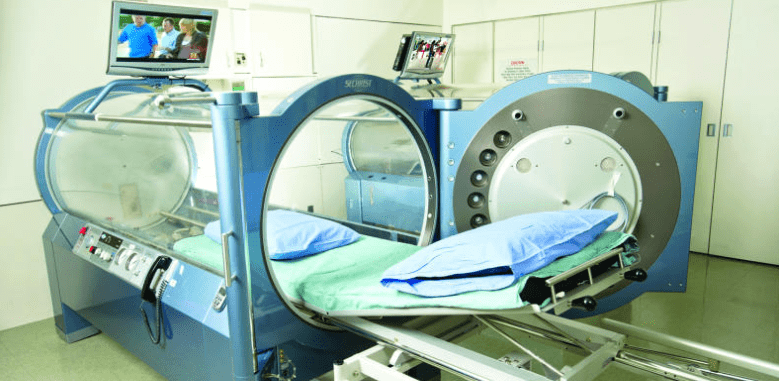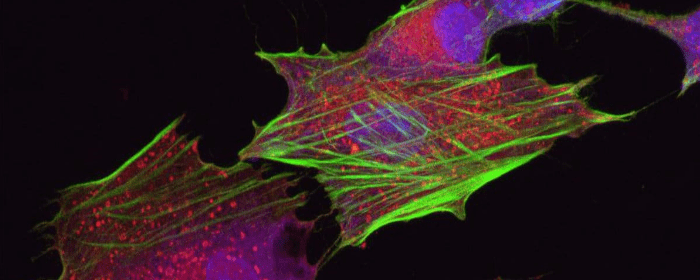
by admin | Aug 8, 2018 | Stem Cell Research, Stem Cell Therapy, Studies
Ulcerative colitis and Crohn’s disease, together known as inflammatory bowel disease, are chronic disorders of the lower digestive tract that cause patients considerable difficulty and discomfort. Patients generally go through periods of normalcy punctuated by relapses. In cases of inflammatory bowel disease, patients may experience severe, and sometimes bloody diarrhea. Patients also experience crampy abdominal pain, the urgent need to defecate, pain with defecation and even fecal incontinence. Consequently, people with inflammatory disease often endure substantial amounts of suffering.
Inflammatory bowel disease is usually treated with 5-aminosalicylate or sulfasalazine. These drugs are intended to reduce inflammation in the bowels. Relapses do still occur for those patients taking these medicines. During these relapses, patients often need to take steroids for short or intermediate periods of time but over time, side effects can occur. Immunomodulators such as azathioprine, 6-mercaptopurine, and methotrexate can be used to reduce inflammation, however, these drugs can also cause side effects. Newer biologic response modifiers have helped people with severe inflammatory bowel disease but they may weaken the body’s immune system, making it more difficult to fight off infection. For these reasons, safer and more effective treatments for inflammatory bowel disease are needed.
Fortunately, researchers have conducted a number of clinical studies examining the role of stem cells in the treatment of inflammatory bowel disease. The most promising results have come from allogeneic mesenchymal stem cell therapy using stem cells derived from the umbilical cord. Research has found that allogeneic mesenchymal stem cells injected into a vein were able to induce a clinical response 3 out of 9 patients tested. One patient had complete clinical remission. In all cases, the stem cells increased the quality of life for patients. Five out of seven patients with inflammatory bowel disease had clinical remission after stem cell treatment. Likewise, further research showed that the stem cells could induce a clinical response and 12 of 15 patients and full clinical remission in eight of them. Here too, patients reported improved quality of life with stem cell treatment.
These results are incredibly promising and offer hope to patients struggling with ulcerative colitis and Crohn’s disease. While more research is needed, patients with inflammatory bowel disease should follow this field closely for new developments.

by admin | Aug 6, 2018 | Studies, Stem Cell Research
Silicosis, which is also known as miner’s phthisis, potter’s rot grinder’s asthma, potter’s rot, is an occupational disease of the lungs that is caused by the inhalation of a specific type of dust called crystalline silica dust. The disease causes inflammation and scarring in the lungs that leads to the formation of lesions. The disease has been increasing in incidence in developing countries in recent years and unfortunately cannot be fully cured.
A recent study, published in Stem Cell Research & Therapy, explored, for the first time, the potential to intervene in processes associated with silicosis. Stem cell therapy has been used to address inflammation and the resulting tissue damage. Mesenchymal stem cells have been applied to other occupational conditions as well. The researchers hypothesized that adipose-derived mesenchymal stem cells would improve pulmonary fibrosis by reducing inflammation.
Through their study, they found that using these adipose-derived mesenchymal stem cells in silicosis did indeed lead to a remissive effect with regard to pulmonary fibrosis. Further, they found that this occurred by reducing inflammation by modifying protein certain cellular pathways that decreased the expression of problematic proteins.
While this data is preliminary, they show the potential promise of stem cells in the therapeutic intervention of silicosis. Future studies will help researchers and clinicians better understand how stem cells can be used to combat the pulmonary fibrosis associated with silicosis, as well as how they can be used to combat other occupational diseases.

by admin | Aug 2, 2018 | Hyperbaric Oxygen Therapy, Stem Cell Research, Stem Cell Therapy, Studies
While most approaches to stem therapy involve infusing purified stem cells into the body, Thom and fellow researchers have shown that hyperbaric oxygen therapy (HBOT) is capable of stimulating the body to produce its own stem cells. Thom, Heyboer, and co-authors have extended this work by showing that by slightly increasing the pressures used during hyperbaric oxygen therapy, one can significantly increase the number of stem cells produced.
In his original work, Thom and colleagues showed that a single, two-hour session of 2.0 atmospheres (atm) pressure (twice the air pressure we normally feel at sea level) was capable of doubling the number of stem cells in the bloodstream. Twenty treatments increased stem cell levels by 800%. To study this phenomenon more closely, Thom’s research group recruited 20 patients to undergo hyperbaric oxygen treatment, some at the original 2.0 atm pressure, and some at 2.5 atm. The primary goal of this research was to find out whether a higher pressure was capable of eliciting a greater number of cells.
As before, treatment with 2.0 atm of hyperbaric oxygen substantially increased the number of stem cells found in the blood. However, treatment with 2.5 atm doubled or even tripled the number of stem cells produced compared to the 2.0 atm treatment session. In other words, a slightly higher pressure causes the body to produce substantially more of its own stem cells.
Researchers focused on two types of stem cells, in particular, CD34+ and CD45-dim—markers that appear on stem cells and/or progenitor cells. They are primarily found on cells in the bone marrow. Stem cells with CD45-dim generally go on to become bone, blood, or blood vessel cells, while CD34+ cells can differentiate into almost any cell. Hyperbaric oxygen therapy is thought to stimulate the bone marrow to produce and release these stem cells into the bloodstream, which is the reason these treatments raise stem cell levels in the blood.
The results published by Thom and coworkers suggest that patients who wish to enhance the number of stem cells should consider undergoing hyperbaric oxygen therapy. Furthermore, the greatest number of stem cells was observed after 20 treatment sessions, suggesting that a greater effect occurs with more treatments.

by admin | Jul 26, 2018 | Stem Cell Research, Stem Cell Therapy
As patients start to investigate the many different types of stem cells, it can become overwhelming. Often stem cells are organized into groups by tissue source, i.e., by the type of tissue stem were derived. While it can be important to know whether stem cells come from adipose tissue (fat cells) or the umbilical cord, for example, it is equally important to understand the types of stem cells by their capacity to differentiate. In other words, what are the types of stem cells organized by their ability to become different or more mature cells?
One of the most intriguing features of stem cells is their ability to become virtually any other type of cell. We all start out as a sperm and an egg but end up as an exquisitely organized collection of heart cells and brain cells and kidney cells, etc. At each step of the way—from early cells to the adult human body—stem cells become more differentiated and less capable of becoming any other cell. Thinking about them this way, stem cells are grouped into four categories:
- Omnipotent stem cells
- Pluripotent stem cells
- Multipotent stem cells
- Unipotent stem cells
Omnipotent stem cells
Omnipotent stem cells, also called totipotent stem cells, truly have the capacity to become any other cell. Omnipotent stem cells can become embryonic cells or even the cells that support the embryo, like the placenta. A fertilized egg is an example of an omnipotent cell. While omnipotent/totipotent stem cells are potentially incredibly useful, their use is highly restricted and controversial. As such, they are not usually used for therapeutic purposes, or even for research.
Pluripotent stem cells
Pluripotent stem cells are the next best thing to omnipotent stem cells. Pluripotent stem cells can become nearly any tissue in the body. Like omnipotent stem cells, the use of naturally occurring pluripotent stem cells is also controversial because they require the use of embryos. However, researchers have devised a rather ingenious way to take regular cells and turn them into pluripotent stem cells. These stem cells are referred to as induced pluripotent stem cells or iPSCs. Induced pluripotent stem cells are particularly exciting because of their potential as research tools and clinical therapeutics. Most importantly, iPSCs sidestep controversy because they are made from mature cells.
Multipotent stem cells
Multipotent stem cells can become any number of mature cells. For example, a mesenchymal stem cell can become a muscle cell or fat cell, a bone cell or cartilage cell. Another powerful feature of multipotent stem cells is that they can divide and form other multipotent stem cells. Thus, their ability to differentiate and self-renew makes them incredibly versatile for research and clinical purposes.
Another example of multipotent stem cells is the type of cells that give rise to blood cells, namely hematopoietic stem cells. Hematopoietic stem cells can differentiate into myeloid type or lymphoid type, but once they do, they are restricted to become their corresponding type of blood cell. For example, myeloid cells can become red blood cells or certain white blood cells, while lymphoid cells are more or less destined to become lymphocytes.
Unipotent stem cells
Unipotent stem cells are technically stem cells but have very little potential become anything other than the one cell they were destined to become. For example, a cartilage stem cell is destined to become a cartilage cell, while a bone stem cell is destined to become a bone cell. A mesenchymal stem cell could become either one, but by the time it has differentiated into a cartilage or bone stem cell, its fate is essentially predetermined. As you may expect, unipotent stem cells have limited clinical usefulness.
In summary, as you think about different types of stem cells, it can be important to think about where the stem cell came from (e.g. fat tissue), but also consider its potential for self-renewal and differentiation.

by admin | Jul 25, 2018 | Bone Marrow, Health Awareness, Stem Cell Research, Stem Cell Therapy
Stem cells derived from bone marrow, or hematopoietic stem cells, are a topic of significant debate in the medical community. While they have exhibited significant potential for benefiting people with both cancerous and noncancerous diseases including immune deficiencies, not all methods for administering bone marrow are created equal. While intra-articular injections of bone marrow are more common and considered safer, intravenous methods pose serious risks, which are explored here.
Intra-articular injections involve injecting bone marrow directly into the compromised joint, whereas intravenous methods entail infusing bone marrow stem cells into the body through the veins. Intra-articular injections have shown promise in treating conditions such as osteoarthritis (OA) in joints such as the knee and has proven to achieve pain relief for moderate-to-severe cases of osteoarthritis.
Intra-articular treatments are localized, so the injected bone marrow is already in its target location upon being administered. According to research, this form of therapy is generally considered to be safe. In intravenous bone marrow transplants, however, there are serious risks associated with treatment. Bacterial infections are common, while viral and fungal infections can also occur and cause life-threatening conditions, such as organ failure.
Risk factors for developing any complication associated with intravenous bone marrow transplantations vary based on a number of factors, including the patient’s age, genetics, and type of disease being treated. With that said, due to its limited risks, intra-articular bone marrow methods appear to be the safest form of treatment currently available. Although each patient will need to discuss risk factors alongside potential benefits with his or her physician, oftentimes the risks appear to outweigh the potential benefits.
There are alternative therapies with fewer potential side effects which may be explored such as Adipose and Umbilical Cord-derived stem cells. These regenerative medicine treatments not only can treat osteoarthritis and sports-related injury conditions, but have also shown positive results in treating neurological conditions such as Multiple Sclerosis, Parkinson’s disease, Post-Stroke, and Traumatic Brain Injuries (TBI).

by admin | Jul 23, 2018 | Stem Cell Research, Stem Cell Therapy
Using growth factors to help stem cells differentiate into chondrocytes, or cartilage cells has been shown to be an effective way to maintain cartilage tissue. However, there are several different types of growth factors, and little has previously been known about which growth factors may be most beneficial for help stem cells differentiate in a way that supports cartilage.
New research published in Stem Cell Reviews has addressed this issue by looking specifically at how four specific growth factors affect differentiation of mesenchymal stem cells – and particularly – how they affect chondrogenic differentiation. The four growth factors explored in this study were: transforming growth factor beta 1 (TGF-β1), bone morphogenetic protein 2 (BMP2), parathyroid hormone-related protein (PTHrP), and fibroblast growth factor 2 (FGF2).
The scientists used methods of analyzing the levels of growth factors as well as the extent of collagen content on days 16, 23, and 30 after implementing growth factor programs. The results showed that TGF-β1 and BMP-2, when used in combination, increased short-term collagen content and other indicators of well-maintained cartilage. When PTHrP or FGF2 was applied, the overall impact of TGF-β1 and BMP-2 on cartilage tissue was initially decreased. Nonetheless, successive applications of both PTHrP and FGF2 helped to maintain the effects of TGF-β1 and BMP-2.
These results help to clarify the ways in which growth factors can be used to improve the ability of bone marrow derived mesenchymal stem cells to differentiate into cells that are viable for supporting cartilage. The specific outcomes provide critical information that can help with protocols for chondrogenic differentiation of stem cells. Future research will likely build on these findings to help scientists and clinicians better understand the best formulas for how to use growth factors to achieve desired results with stem cells.







 St. Petersburg, Florida
St. Petersburg, Florida
